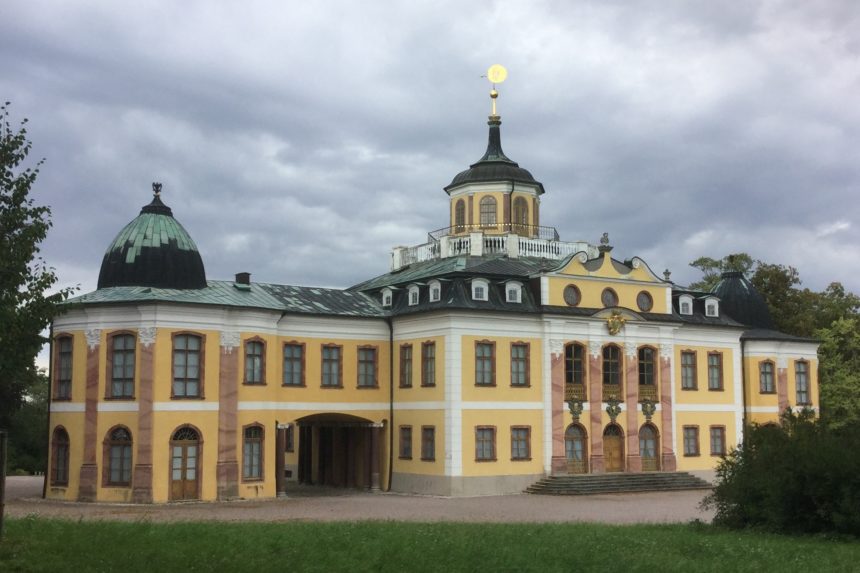Co-author Alma Kaurāte-Java
Belvedere Castle, the Baroque French-style summer residence of Duke Ernst August of Saxe-Weimar and his successors, was built over a period of twenty years in the early to mid-18th-century. Today the Castle-complex, its parks and gardens, form part of the UNESCO World Heritage site “Classical Weimar” and is managed by the Klassik Stiftung Weimar (Weimar Classical Foundation).
Interested in learning more about the history and heritage of the castle- complex’s park and gardens, we took the fifteen-minute bus-ride from the centre of Weimar to spend a few hours picking Andreas Pahl’s brain. He has served as the Head Gardener at Belvedere for the past ten years, and has agreed to show us around the park to discuss some of the lesser known elements of its heritage.
We meet at his office on the first floor of the former Head Gardener’s house. Today, the ground floor of this building is used as an exhibition space for projects of European Heritage Volunteers. This is no coincidence, as Belvedere forms part of the “Parks and Gardens of Classical Weimar” project hosted each year by European Heritage Volunteers. During this project, volunteers work to uncover and restore the grounds’ historical path system to the way it was during the days when the last Duke lived here.
Belvedere forms part of the “Parks and Gardens of Classical Weimar” project hosted by European Heritage Volunteers each year. During this project, volunteers work to uncover and restore the grounds’ historical path system. Using historical maps, volunteers work for two weeks per year uncovering a path system which is hidden about 20 cm under the ground. “It is my favourite part of the year because every time the volunteers leave, a new part of the park – and therefore the heritage of Belvedere – is accessible to the public,” Pahl tells us.
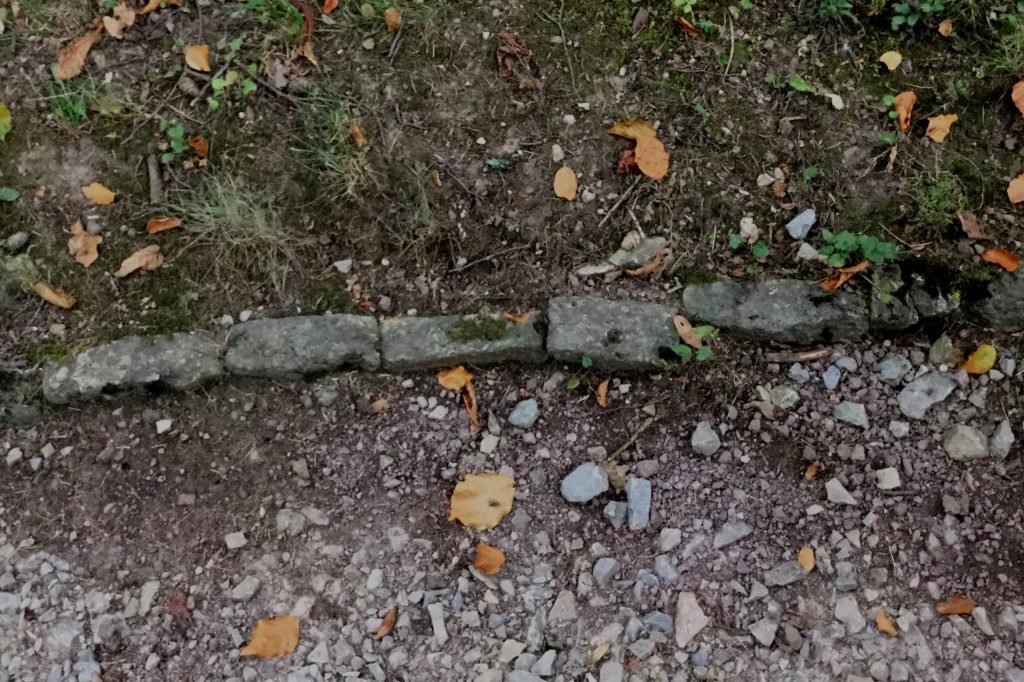
Are there any other traditional practices being used to maintain the heritage of the castle-complex that is not common knowledge, or maybe falls outside of the public eye? “In the Orangery (where about 600 plants from the gardens are moved for protection against cold during the winter) we still use the original heating-system installed in 1820. Over the years, the system has had to be partly-restored as the clay that it was built with cracks and breaks over time, but everything on the inside is original.”
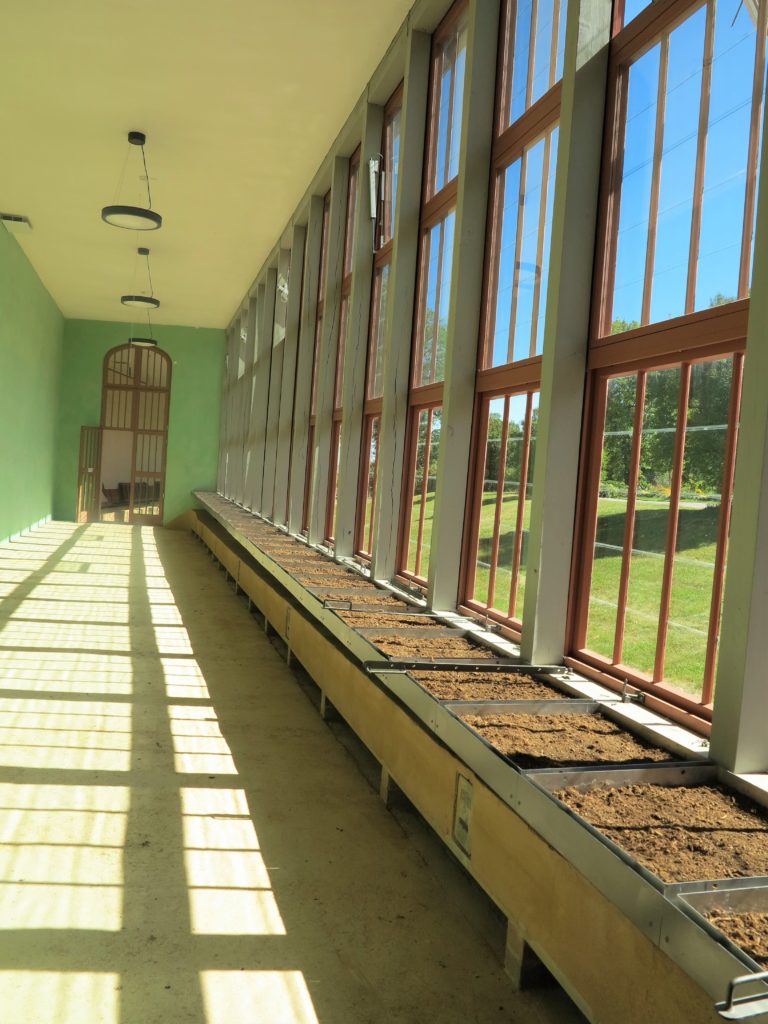
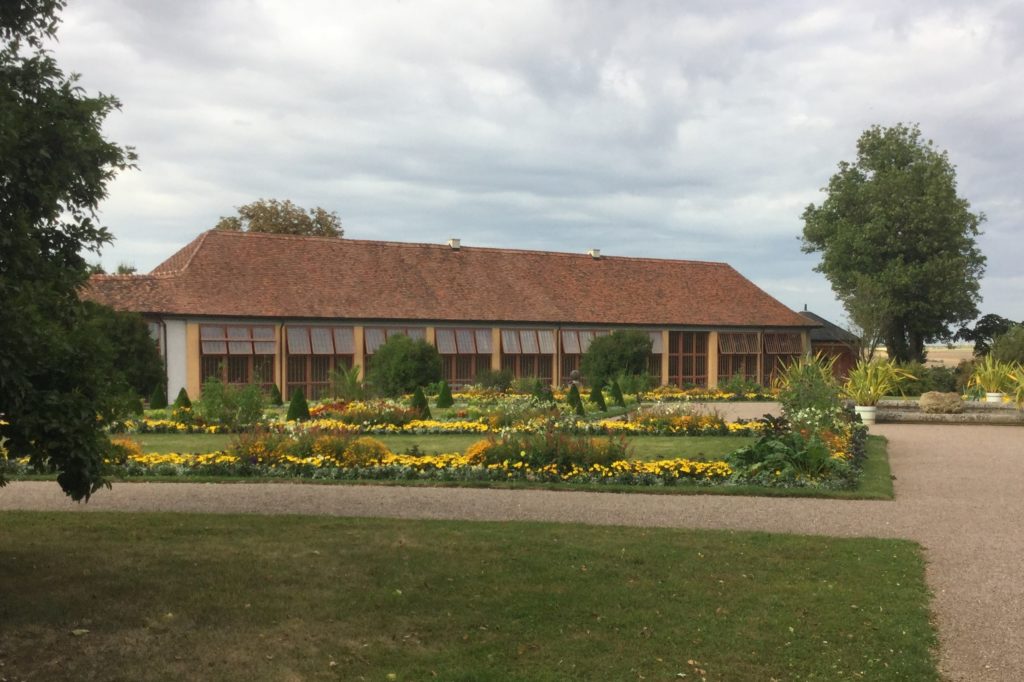
The heating system makes use of wood that comes from the roughly 150 ha of parks managed by the Klassik Stiftung Weimar, and only trees that need to be removed are used, making it a sustainable practice. The amount of wood necessary to heat the Orangery for the entire winter can be as much as 120 m , but this varies greatly. “It also depends on the types of plants. In the main room where the trees are stored, the temperature is kept bet- ween three and five degrees Celsius. The double northern wall also helps to keep the heat inside.” Other rooms, where seedlings or flowers are grown, are kept warmer and have the most windows for the sun to heat it during the day. As it is no longer norm for gardeners to live on the premises, we wonder how they ensure that the fire does not burn out during the night. “We have systems in place for that,” Pahl says. “The person in charge of the heating lives close enough to see the chimneys. If there is no smoke, there is no fire – and then you need to run before the cold infiltrates the building.”
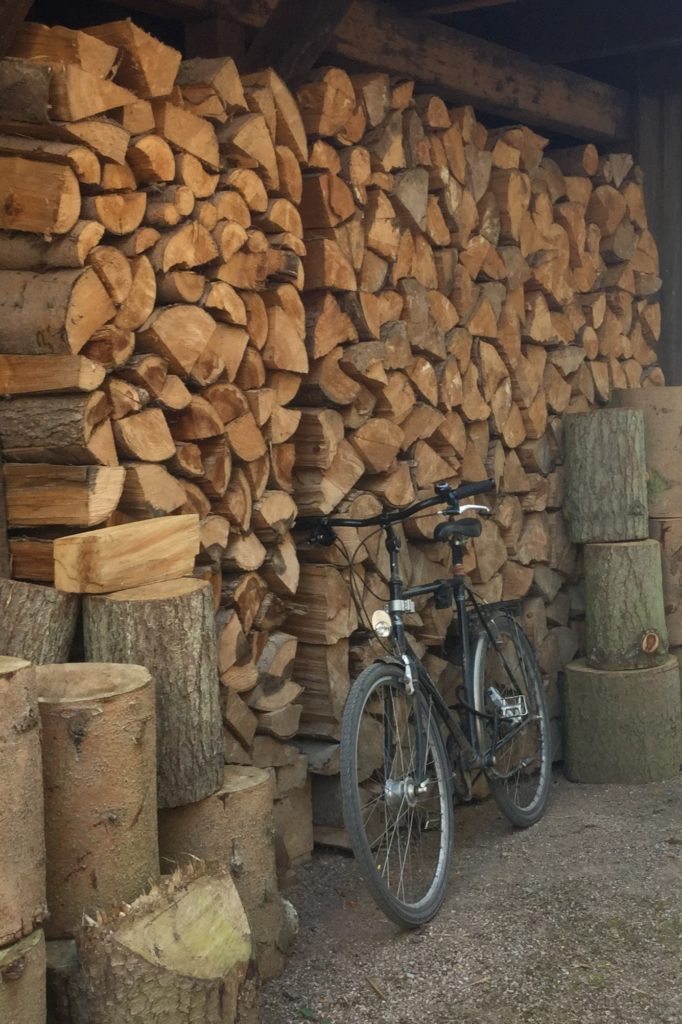
Outside in the bright sunlight, we pass through the New Holland Garden and notice some vegetables growing between colourful flowers. “When the Duke lived here, he had a Kitchen Garden. Come.” We walk down into a wooded area of the park where we find a small cottage. As it turns out, there were not one, but two head gardeners during the Duke’s time: one of them were solely in charge of the Kitchen Garden, and the other of the entire rest of the property. Today, the Kitchen Garden Keeper’s house is inhabited by one of Pahl’s colleagues. “I told you someone lives close enough to see the chimneys!” Pahl exclaims with a laugh, and we descend the few mossed-over 19th century stone steps into what used to be the Kitchen Garden.
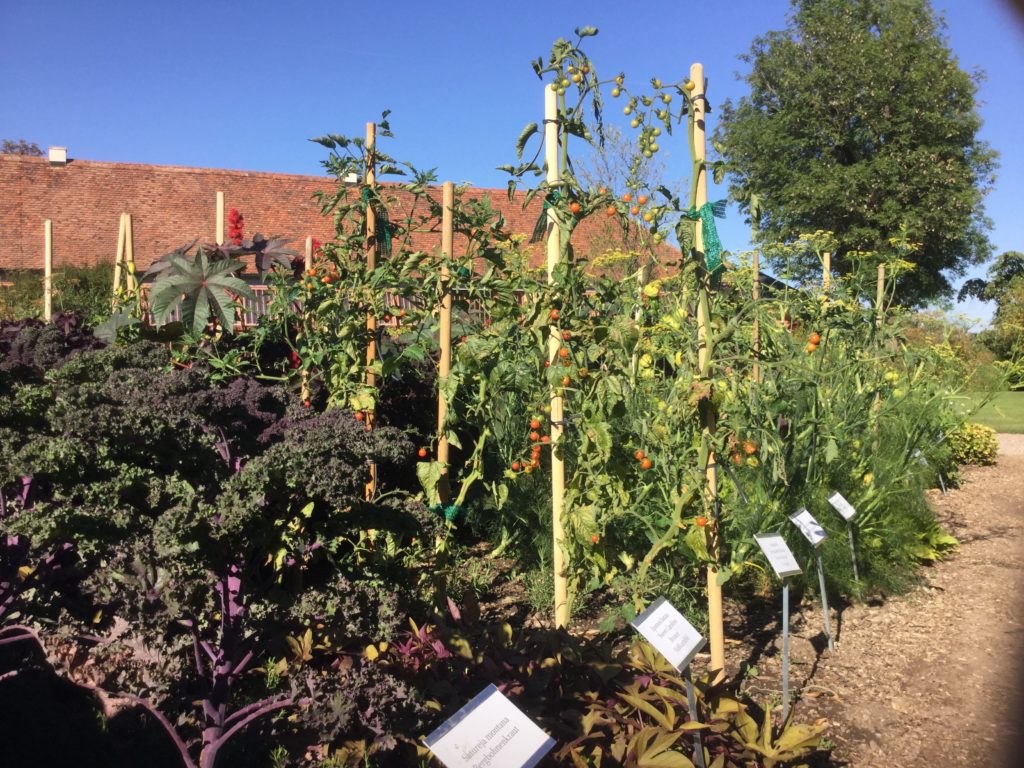
Photo: Stennette van den Berg 2016
A faint difference in the height of grass separates where the paths and the garden beds used to be in this four-quarter symmetrical garden. “All of the vegetables used in the Duke’s kitchen were grown here until he left in 1918. The territory was then divided between families and the vegetables needed for consumption were grown in greenhouses. During subsequent wars vegetables grown there were also used for public consumption.” A line of apple trees marks the end of the garden, and beyond them lies the river Possenbach. On the other side of the river, the Belvedere forest starts. “Once there was no longer a Duke who needed vegetables for his table, nature took its course.”
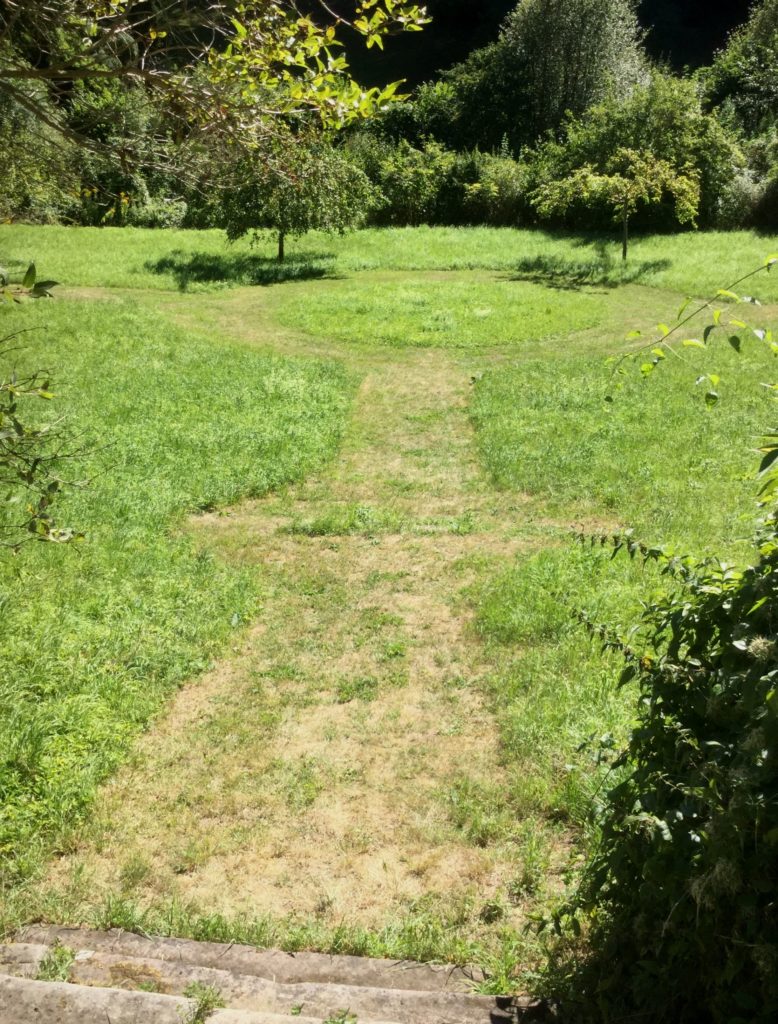
A semi-ruined wall on the other end of the garden shows the remains of a grape trellis. The wall used to be an arch-way entrance to the trellis, but heavy annual rains and a lack of maintenance eventually brought the arch down. “My goal is to restore this garden, not necessarily as it was in the 1850s, but to become a real gar- den again.” With a team of only 20 people working on the grounds as a whole, it is impossible to spare someone – and it is evidently not a job for only one person. In the shade of the apple trees, Pahl continues: “I hope that, once the path system isrestored, European Heritage Volunteers can start here. It might take years but that does not matter – it is working for the sake of the heritage that is important.”
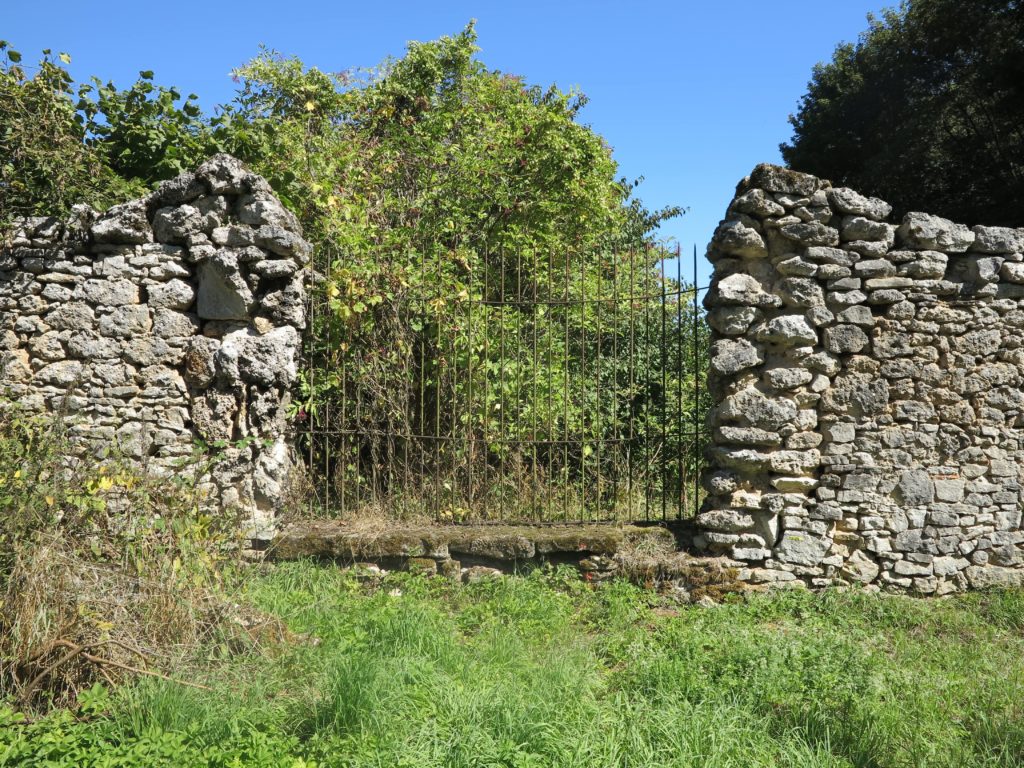
Photo: Stennette van den Berg 2016
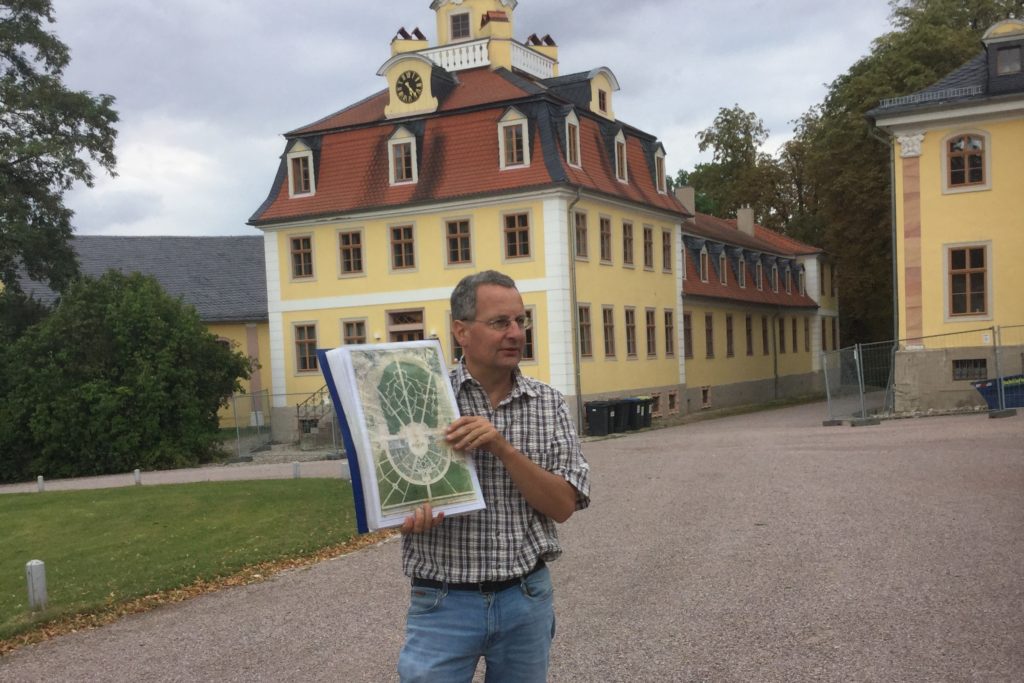
Later, as we reflect on our afternoon spent with Andreas Pahl, we agree that one thing is clear: as human beings we know that we need heritage – it is sewn into the very fabric of our human identity – but we sometimes forget that heritage needs people, too. If we do not make a constant effort to maintain, revitalise or restore heritage we run the risk of losing it. The Belvedere Park is a fitting example of this, where the physical effects that time has makes for complex displays of heritage: just because heritage is hidden or inaccessible does not mean it does not have a purpose (as in the case of the Orangery’s heating system); sometimes all heritage needs to become accessible is some effort (as in the case of the historical paths’ restoration); and (as we saw in the old Kitchen Garden) the efforts of the people committed to creating access to heritage should never be underestimated.
XXXXXXXXXXXXXXXXX